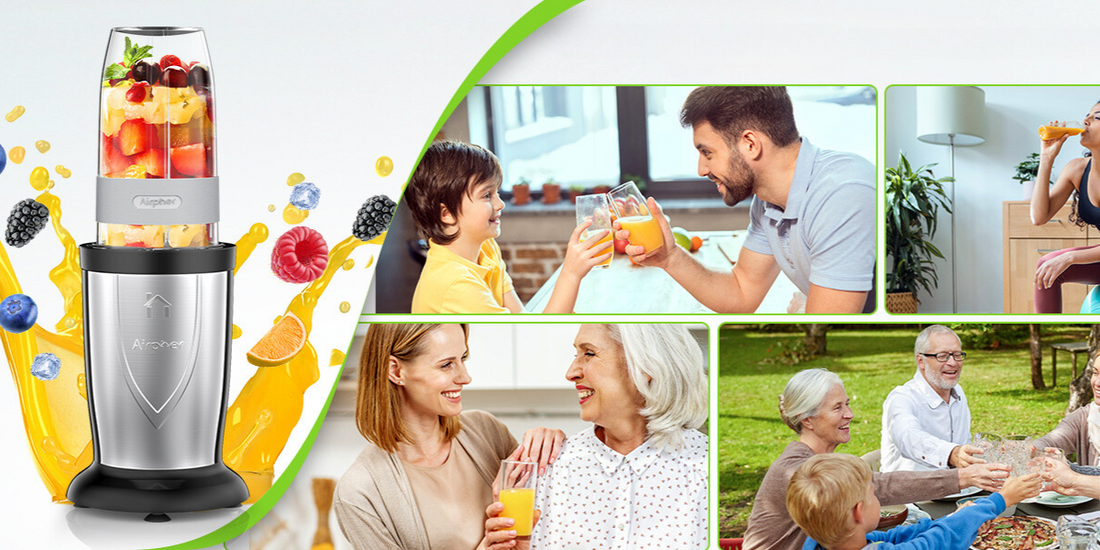Blenders are indispensable tools in modern kitchens, capable of effortlessly creating smoothies, soups, sauces, and more. However, finding the right powerful blender can be overwhelming, given the plethora of options available in the market. In this comprehensive guide, we will explore the essential factors to consider when purchasing a powerful blender. From motor power and blade design to features and budget considerations, this article aims to equip you with the knowledge needed to make an informed decision.
Understanding Blender Motor Power and Performance
One of the most critical aspects to consider when buying a powerful blender is its motor power. The motor determines the blender's performance and ability to handle tough ingredients. Blenders usually come with motors ranging from 300 to 1500 watts.
- Motor Power Rating: Higher wattage generally indicates a more powerful blender. Blenders with 1000 watts or more are ideal for handling challenging tasks like crushing ice, blending fibrous fruits, and making nut butters. For household use, a blender with at least 600 watts should suffice for most blending needs.
- Blade Speed and Efficiency: A powerful motor is only as good as the efficiency of its blades. Opt for blenders with sharp, durable stainless-steel blades that can rotate at high speeds to ensure smooth and even blending.
Container Size and Material
- Capacity: Blenders come in various container sizes, typically measured in liters or cups. Consider the size of your family or the amount of food you plan to blend regularly. For single servings or small recipes, a 32-ounce (0.9 liters) container is sufficient, while larger families may prefer 64-ounce (1.9 liters) or more.
- Material: Blender containers are commonly made from glass, plastic, or stainless steel. Glass containers are durable and do not absorb odors or stains but may be heavier. Plastic containers are lightweight and less likely to shatter, but they may retain odors over time. Stainless steel containers offer excellent durability but make it difficult to see the blending process.
Blade Design and Configuration
Blade design significantly influences blending performance, ensuring that ingredients are blended evenly and thoroughly.
- Four-point Blades: Many blenders feature four-point blades, which work well for general blending tasks. They are suitable for making smoothies, shakes, and light purees.
- Six-point Blades: Blenders equipped with six-point blades are more efficient at crushing ice and blending hard ingredients. They are ideal for preparing frozen desserts, nut butter, and thicker blends.
- Removable Blades: Blenders with removable blades are easier to clean and maintain. Ensure that the blades are securely fastened for safe operation.
Control Options and Features
- Speed Settings: Look for blenders with multiple speed settings or variable speed control, allowing you to adjust the blending speed as per your requirements. This feature is especially useful when blending delicate ingredients that require a gentler touch.
- Pulse Function: The pulse function allows you to quickly blend ingredients in short bursts. This feature is valuable for achieving a coarse texture or incorporating chunky ingredients into the blend.
- Pre-Programmed Settings: Some blenders offer pre-programmed settings for specific tasks, such as smoothies, ice crushing, and soups. These settings simplify blending and ensure consistent results.
- Tamper Accessory: A tamper is a useful accessory that helps you push ingredients towards the blades while blending, ensuring a smoother blend without air pockets.
Noise Level and Stability
- Noise Level: Powerful blenders tend to be noisier than less powerful models. Consider blenders with noise reduction features if you are sensitive to loud noises, or plan to use the blender in a noise-sensitive environment.
- Stability: A stable blender is essential to prevent accidents during operation. Look for blenders with a sturdy base and a non-slip grip to ensure stability while blending.
Cleaning and Maintenance
- Dishwasher Safe Parts: Blenders with dishwasher-safe parts make cleaning a breeze. Check if the container, lid, and blades can be safely cleaned in the dishwasher.
- Self-Cleaning Function: Some blenders offer a self-cleaning function, which saves time and effort. This feature typically involves blending water and soap to clean the container thoroughly.
Budget Considerations
Blender prices vary significantly based on brand, motor power, features, and build quality. Set a budget based on your needs and stick to it. Consider the long-term value and durability of the blender, as a more expensive, high-quality blender may prove to be a worthwhile investment in the long run.
Conclusion
When purchasing a powerful blender, consider the motor power, blade design, container size, and materials. Additionally, evaluate the control options, noise level, stability, and ease of cleaning. By thoroughly understanding your needs and comparing different models, you can make an informed decision and find the ultimate powerful blender that best suits your kitchen and blending requirements.

